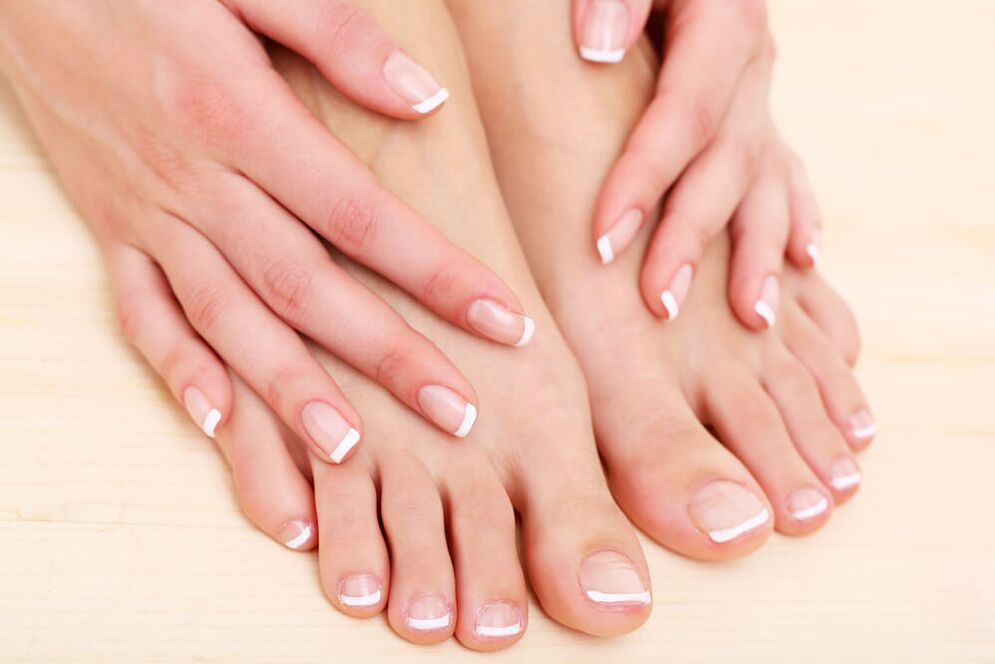Antifungal nail polish helps to quickly get rid of mycosis that has affected the fingernails or toes. It is the most practical and convenient topical medicine because, unlike cream or gel-like medicines, it does not rub off.
It is advisable to use varnish if the area of the nail damaged by the fungus does not exceed 60%. It is used as an independent treatment and can be prescribed as part of a complex therapy.

Advantages and disadvantages of varnishes
Varnishes from nail fungus have a liquid structure that allows them to penetrate the depths of the nail plate and fight infections more effectively. A protective film is formed on the surface of the nail. It prevents the flow of oxygen from the outside, which is harmful to mycotic microorganisms. In addition, thanks to this film, the concentration of medicinal substances inside the nail remains high.
Most nail polish not only fights the disease but also improves the condition of the plates. Your nails will be stronger, healthier and stronger. Most often, the use of varnishes is allowed to prevent fungal infections. They are invisible and can therefore be used in swimming pools, spas, gyms and other public places where there is an increased risk of infection.
The main disadvantages of nail polish varnishes:
- Varnishes for treating nail fungus are expensive. In addition, each has a contraindication to its use.
- Some varnishes contain toxic compounds and are therefore not recommended for use in children and pregnant women.
In general, the varnish used to treat nail fungus is an effective tool that allows you to get rid of the disease in a quality way.
Preparation of the procedure
Preparation of the drug is necessary to increase its effectiveness. The simplest solution is steaming with therapeutic baths.
These are implemented as follows:
- Add a few tablespoons of sea salt, essential oils, laundry soap to the hot water;
- The bath is taken for 15-20 minutes;
- After the procedure, the feet should be thoroughly dried with a towel;
- The nails are cut and filed. The calluses are removed.
The plate should then be treated with a cloth soaked in an alcoholic solution. Required for disinfection. To make it easier for the active ingredients to get in, you can also file your nails from the outside so that they become rough. Using the varnish does not require removing the disc.
Some recommendations
Here are some tips from an expert:
- Before starting treatment, you should seek the advice of a specialist who will tell you exactly which type of fungus affects your nails;
- In case of damage to the growth zone of the nail plate, the treatment should be comprehensive. In addition to external application, antimycotics will be needed to completely kill the infection;
- Do not get bitter if any lesions remain on your nails after treatment. Probably the fungus itself is already dead and its waste is still under the nail. In this case, a medical pedicure will help.
There are several benefits to treating with antifungal varnishes. The use of such drugs is effective, convenient and convenient, allowing you to lead an active lifestyle without losing comfort!
Contraindications and side effects
When treating fungal infections of the nails, it should be borne in mind that fungicides are therapeutic, non-cosmetic products. Therefore, they should be used strictly according to the instructions and after consulting a doctor. Most varnishes have the same contraindications. Do not use during pregnancy and lactation, in early childhood (up to 4 years) and in case of intolerance to the components of the therapeutic agent.
In some cases, the use of fungal varnish in hypersensitive people can cause unwanted allergic reactions such as redness, itching and hives. Therefore, take care of your own health and use antifungal agents strictly according to the recommendations of the specialist.
Opinions
Some opinions about those who treated the nail fungus with varnish.
- My mother used nail polish. The cure is expensive but copes well with unpleasant symptoms. It has a pleasant odor and after being applied to the affected nail a feeling of coolness develops, the unpleasant itching and other discomfort disappears. I can note that my mother’s toenails were cleaned and since they had to be cared for daily during the treatment, they now look much better than before the treatment. The varnish forms a strong film on the nail and you no longer have to worry about the fungus spreading further.
- I once discovered this problem in myself and went to the doctor. He recommended me a cheap varnish. Based on the description, the drug is concentrated and very effective. Within a week, the problem caused by the fungus disappeared.
Most people respond positively to healing varnishes. The only significant disadvantage of these compositions is the high cost.
Preventive measures
Many therapeutic agents are actively used not only to treat fungal diseases but also to prevent fungal infections in people prone to such diseases.
It should be borne in mind that almost all antifungal varnishes contain large amounts of toxins, so it is advisable to study the instructions and composition of the product in detail before taking preventive measures.
Recommended for preventive purposes:
- wear shoes on the beach, in the pool, in the sauna or in the bath (preferably closed and rubber);
- use cotton socks, which are advisable to change daily;
- do not wear your own shoes;
- after showering and bathing it is advisable to wipe your feet and hands thoroughly;
- keep your feet and hands dry.
Nowadays, antifungal varnishes have gained a lot of popularity and have received a lot of positive feedback from both doctors and those who use them.
























